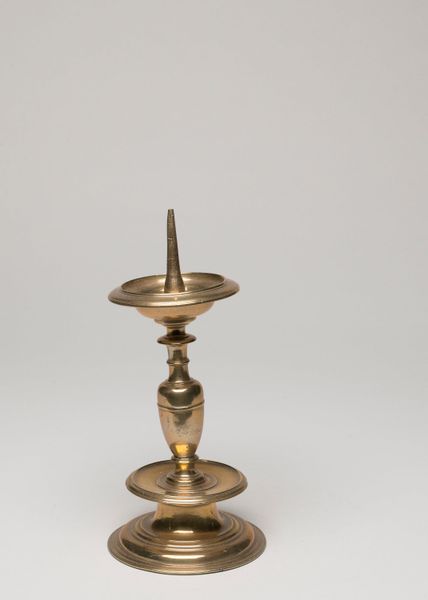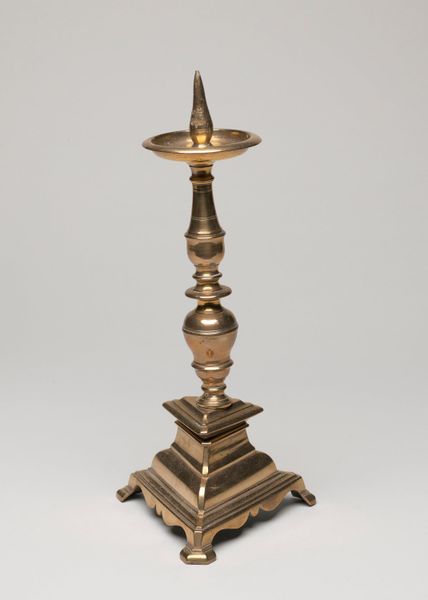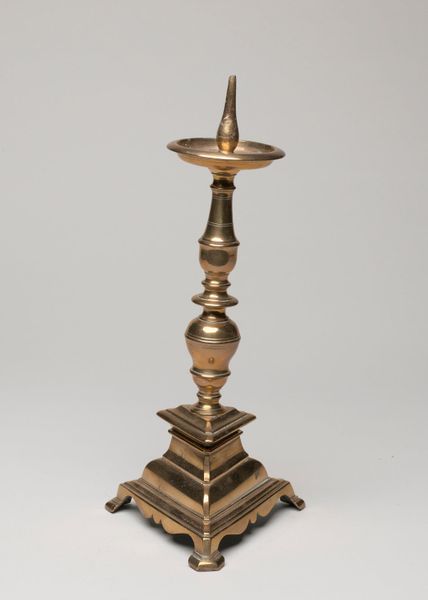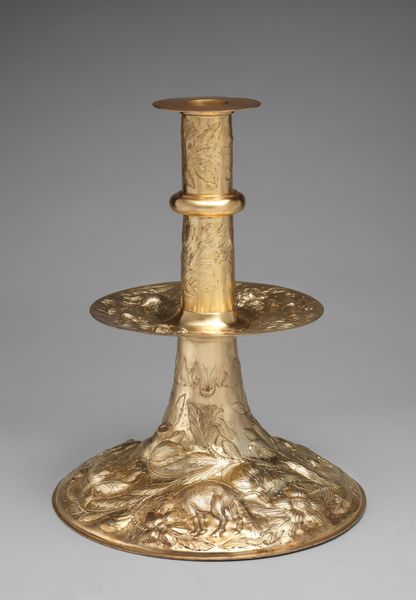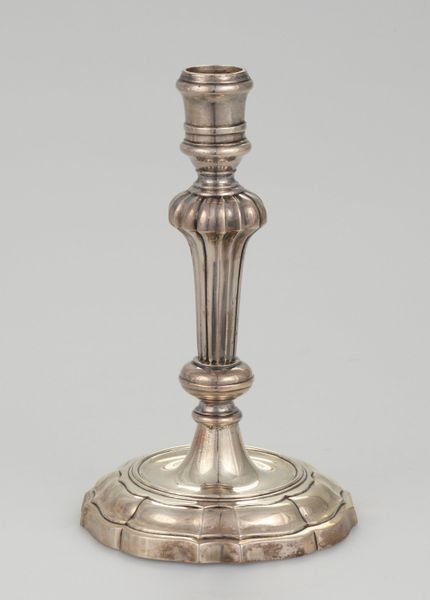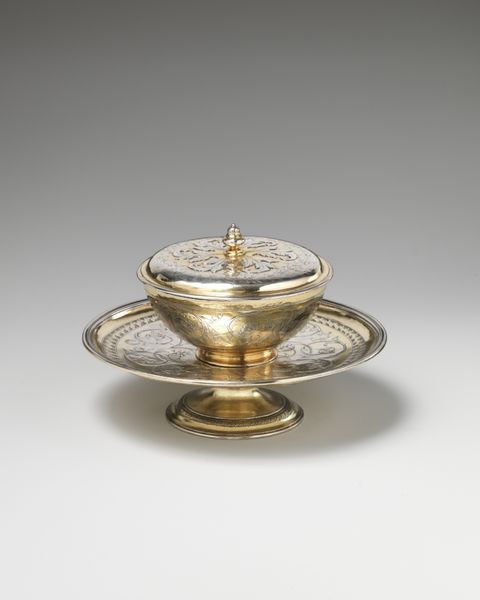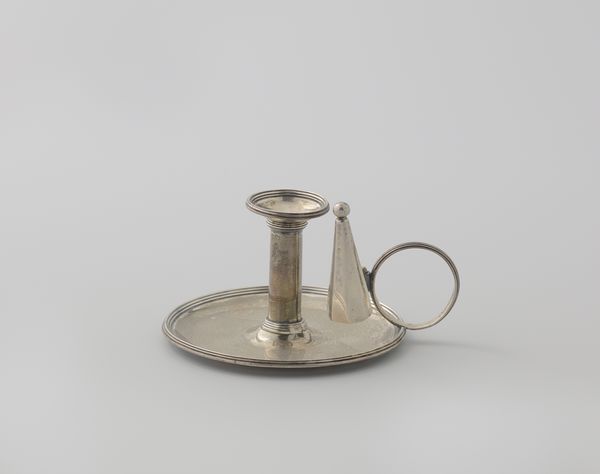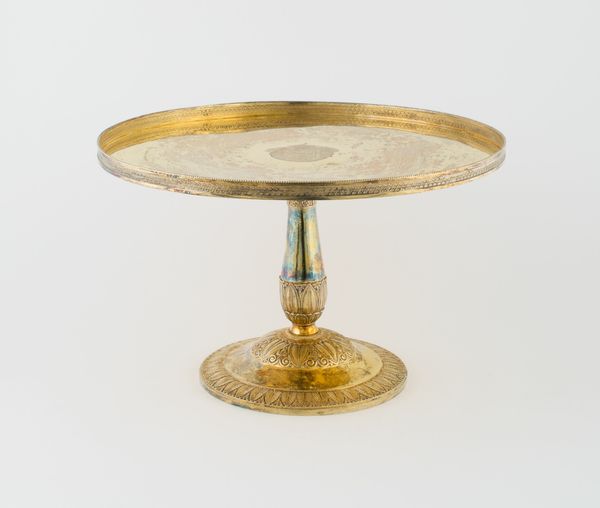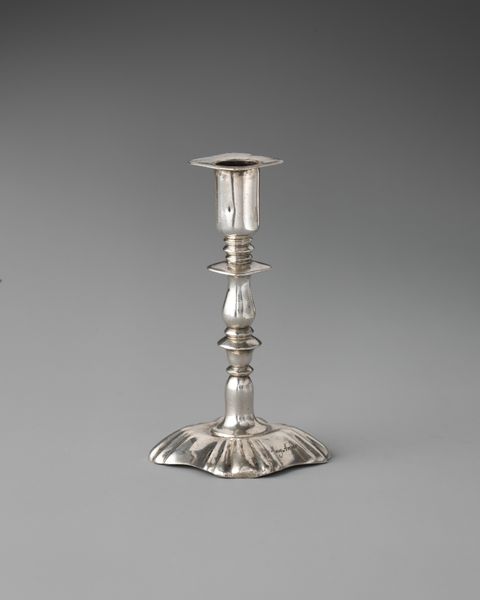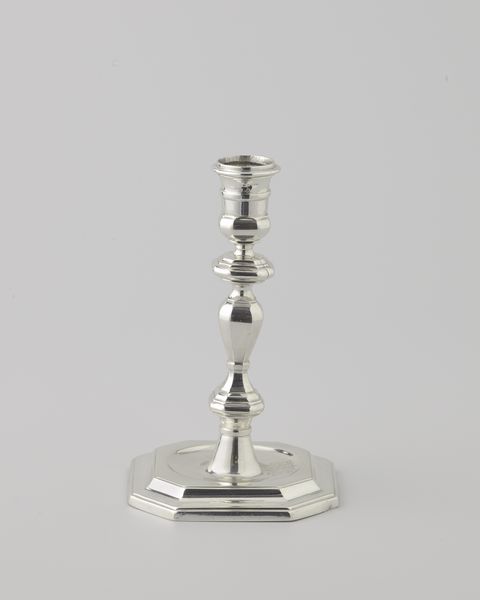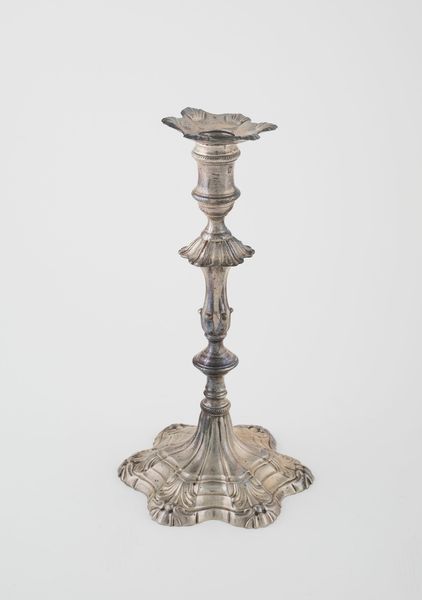
brass, metal, sculpture
#
brass
#
medieval
#
metal
#
form
#
sculpture
#
decorative-art
#
italy
Dimensions: 8 3/4 x 3 7/8 x 3 7/8in. (22.2 x 9.8 x 9.8cm)
Copyright: Public Domain
Editor: Here we have a 16th-century brass candlestick. Its simple elegance makes me think about light in a medieval castle, which must have been so precious. What can you tell me about this piece? Curator: Well, looking at this object through a materialist lens, it is about more than mere function or aesthetic appeal. Consider the labour involved. The extraction of raw materials, the smelting of the metal, the casting and finishing... all points to a complex system of production and trade networks operating even in the 16th century. Editor: That makes me think about who would have owned it and the social structure in that time period. Curator: Exactly. Brass wasn't cheap. A candlestick like this speaks to a level of wealth and status. But more importantly, examine the design: the modular form, repeated shapes, the techniques used to assemble. Consider, for a moment, this object as a product of skilled craftsmanship – not 'high art', but something circulating in a market. Where did the brass come from? What kind of workshop produced this? Were there apprentices involved? Each of these questions unlocks insights into the social fabric of the time. Editor: I never thought about something so functional in that way! I was focused on the beautiful form. Curator: Form is still important, but for a materialist, it becomes a record of the process. This candlestick, through its materials and construction, can inform us about the historical labor, technologies, and economics that brought it into existence. It democratizes our perception of art history and reveals the system that dictated who could produce, buy, and ultimately own it. Editor: So much history in something so humble. It shows the deep connections between even everyday objects and broader societal trends. Curator: Precisely! By thinking about art’s production process, we move beyond admiring it in isolation, and we recognize it is a manifestation of a world in which its meaning is made.
Comments
No comments
Be the first to comment and join the conversation on the ultimate creative platform.
